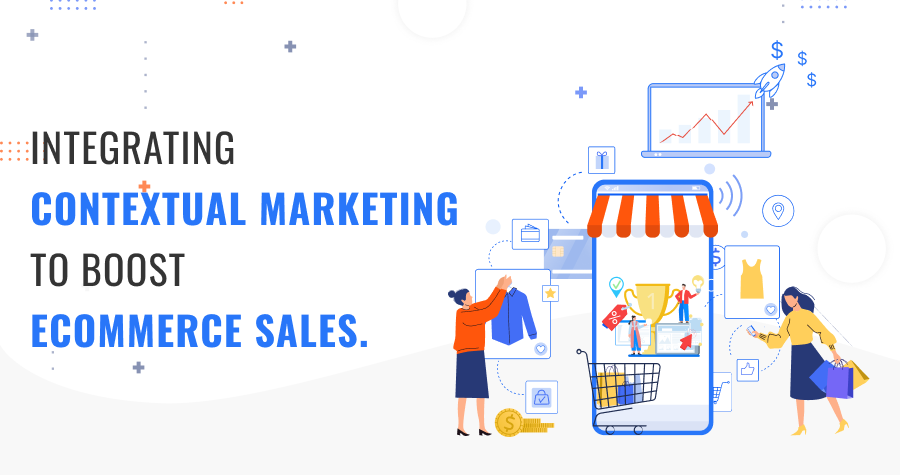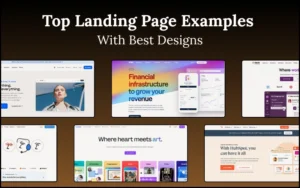
Until recently, marketers did not give much thought to contextual marketing – because they didn’t need to.
Their marketing strategies seemed to work (well enough), with them focusing on developing strategies based on the brand, the marketing channel, and the sales campaign. However, now with Google letting go of the third-party cookie, it is time to take a relook at the tried and tested method of developing content based on the context.
During the initial stages of internet marketing, contextual marketing was all everyone was focusing on, and rightly so. Then, however, we deviated from that ideal and started chasing our prospective customers around with cookies and flooding the web with advertisements.
Most of these advertisements didn’t make sense and weren’t appropriate for their site, and the user’s shopping experience was all over the place.
But is contextual marketing even relevant in today’s hyper-personalized world?
We believe it is.
What is Contextual Marketing?
You don’t have to define contextual marketing in the exact terms as long as you want to show the targeted marketing campaign to the interested audiences at the right time.
Contextual marketing is all about developing a data-based marketing strategy and devising content that offers targeted advertising determined by the customer’s current needs, location, and search activity.
Yet, it has yet to gain importance among marketers. In a survey that measured the degree of familiarity with contextual marketing among marketers in the US, only 27% of marketers were very familiar with the concept. However, more than 40% were neither too familiar nor unfamiliar. We believe that these numbers will see a dramatic change in the years to come.
A look at these statistics will prove that.
The contextual advertising global market was valued at $157 billion in 2020, and this number is predicted to grow at a CAGR of 13.3% to $335 billion by 2026.
Carve a niche for yourself by exploring these lucrative web design business ideas.
Contextual Marketing – Revival of a lost art of Marketing?

The pivotal moment that can potentially change the course of digital history could be Google’s support removal of third-party cookies in 2022 from Chrome.
So, instead of chasing customers around the internet, marketers have to rethink their marketing strategies and focus on customer needs, personas and preferences.
In the future, marketers should focus on context and the content. Content marketing is all about the materials you provide your customers within blogs, email campaigns, newsletters, offers, and advertisements. On the other hand, context refers to the timing and specificity of customer need that defines the delivery of content.
Present State of eCommerce Marketing
These days, marketing is not about the brand or the product. Instead, it focuses on the customer.
Using eCommerce analytics tools, marketers have to devise creative ways to attract and retain customers. To satisfy customers’ demands, marketers have to focus on personalization and contextualization. They have to provide relevant information to the right customer at the right time.
● Is personalization not enough?
Of course, personalization matters.
If there is one method that can dramatically improve your sales standing, it is personalization. The crux of contextualization is crafting specific content by focusing on the timing, substance, and format to meet the micro needs of a particular customer rather than appealing to a generic audience.
But personalization is not enough. You should move beyond ‘Hello (Customer Name) in emails and other ‘easy-to-implement’ personalization tactics as a marketer.
There is a huge shift towards user privacy resonating even around the eCommerce world.
Sticky retargeting and excessive following of customers have left a sour taste in many users’ mouths. With governmental regulations and industry self-regulation coming into force, customers’ genuine need for data privacy is being considered.
There is a need to move beyond personalization and bring contextualization to the fore. However, we have to also talk about data behavior.
● What is data behavior in terms of Contextual content?
Data behavior in the context of marketing refers to how a particular customer from your target audience searches for products online, the tools they choose to interact with your brand, product selection steps they take, and more.
When you have a customer persona dataset, it becomes easy to develop customized and contextual advertising.
What can eCommerce Businesses gain from Contextual marketing?
eCommerce websites help any business interested in earning an increased return on investment can benefit from contextual marketing. Let’s look at some of its benefits:
● Increase in click-through-rates
Since contextual advertising shows targeted content to customers, click-through rate, ROI, and brand engagement are higher.
● Interact well. Convert and retain better
Contextual marketing helps develop better engagement with customers by proactively anticipating their needs and developing advertising strategies that cater to them.
It improves customer engagement and active participation in brand communication. It also boosts conversion, retention, and acquisition.

● Enhanced user experience
Since contextual marketing is personalized, timed, and positioned strategically, the chances of boosting customer experience are also present. You won’t be required to constantly bombard your customers with advertisements for products you think they need.
Each customer is attended to using a customized campaign, which builds trust and brand credibility.
● Boost revenue
Your customer has already shown keen interest in your product. When you offer them timely, valuable advertisements, you have a higher chance of converting them into sales and increasing your revenue.
● Align content with an audience
Since you provide personalized content based on buyer persona, you will be able to improve engagement with your audience dramatically. And, when the content is aligned with their needs, customers are more likely to have an enhanced shopping experience.
When you have customers already invested in your brand or products, constantly abusing them with advertisements will put them off your brand for good. Instead, with the help of contextual advertising, you only promote products to customers who have shown interest. Moreover, they won’t need much motivation to make the purchase or engage with your brand again and again.
CHeck out Best Digital Marketing Trends.
How to Integrate Contextual Marketing into your eCommerce Marketing Mix?
Marketers are feeling the need for context in addition to personalization, and contextualization is the only strategy that can take the right message to the right customer at the right time.
● Develop Customer Persona Database
First, define who your target audience would be and develop a user persona based on everything you know about the customer. It is important to create unique personas for different users as you want to ensure the messaging is consistent with their needs.
● Create offers about the content on the page
Your customer visits a particular page on your website looking for some solution to their problems. They don’t land there by coincidence (most of the time, at least).
Make it worth their while by providing offers or discounts that will benefit the user and are related to the content on that particular page. For example, if the user is looking at hiking shoes, it makes sense to provide offers on shoes or a ‘must-see’ checklist before buying them.
● Get creative with call-to-action (CTA)
Call-to-action is critical, and to be most effective, they need to be creative and create a sense of urgency. Get creative, but be too pushy.
For example, a person looking up the prices of hiking shoes or comparing the features of various shoes should not be treated to a CTA leading them to a blog. They are further down in the sales journey and should ideally be sent towards the checkout.
Likewise, a person reading a case study or your resource material is not typically looking to buy and shouldn’t be prompted with a CTA.
The CTAs you use should be in-sync with the page and point in the sales journey your customer is currently in.
● Keep the conversion cycle short.
Always take the shortest route to conversion. For example, you can use smart forms for your site visitors. So they don’t have to fill in the same routine information each time. Instead, use the time to glean more useful information from your customers.
Contextual marketing boosts eCommerce sales so that we can satisfy customers’ needs. Without contextual marketing, eCommerce stores run the risk of designing advertising for the wrong customers. Also, targeting them at the wrong time.
Include contextual advertising in your marketing mix. Eventually, you’ll be able to see a marked increase in your sales figures. Also, higher return on investment, and better user engagement. And when you include technology in the mix, you will get a better position to identify and optimize messaging.




